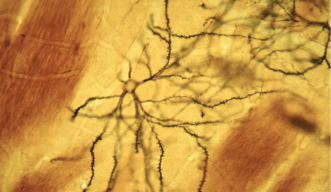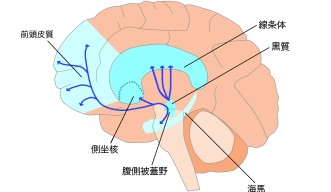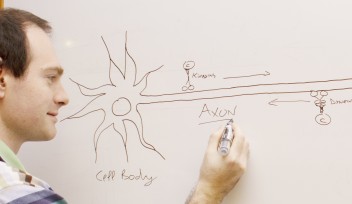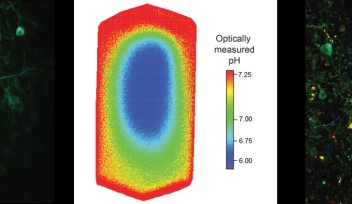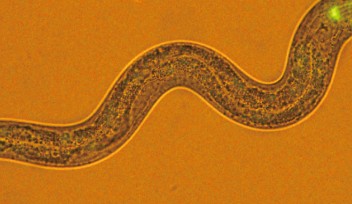Addicted to Dopamine

As a PhD student at the University of Aberdeen in the UK, Gordon Arbuthnott came across a paper by a group in Sweden that introduced him the world of the dopamine, a neurotransmitter commonly dubbed the brain chemical behind pleasure. Published by Bengt Falck, Falck’s mentor Nils-Åke Hillarp and others in their group at Lund University, the paper outlined the first successful method for visualizing neurotransmitter distribution – a revolutionary feat that gave scientists the first tools to investigate mechanisms behind chemical communication in the brain.
“In the 21st century, an age when researchers can see the distribution of thousands chemicals in the brain, it’s hard to imagine the excitement of being able to see the distribution of only one neurotransmitter,” says Arbuthnott, now head of the Brain Mechanism for Behaviour Unit at OIST. “But it was a different time back then.”
And so Arbuthnott’s fascination with dopamine began. At OIST, his Unit delves into the structure and physiology of neurons that receive dopamine with the hope that their work will help demystify the chemical’s role in the brain. The complex and elusive nature of dopamine makes it difficult for researchers to successfully treat diseases associated with its malfunction, but Arbuthnott's understanding of the chemical's importantance has come a long way since he was first introduced to it in the mid-1960s.
As soon as he graduated from Aberdeen in 1969, Arbuthnott went directly to work with the Swedish group, then at the Karolinska Institute in Stockholm. There, he took part in a project that aimed to uncover the location of dopamine production in the brain and the chemical’s relationship with reward, reinforcement and addiction. But dopamine’s responsibilities in the brain aren’t limited to instigating pleasure. The chemical also performs important functions in regulating movement and attention span. After working in Sweden, Arbuthnott also went on to study the chemical’s role in Parkinson’s disease and schizophrenia.
While those afflicted with Parkinson’s disease exhibit decreased levels of dopamine in the brain, researchers think schizophrenia and attention deficient disorder (ADHD) might also be caused by flaws in the production of dopamine, potentially an overproduction of the chemical. Consequently, drugs used to treat schizophrenia stunt the production of dopamine, while drugs used to treat Parkinson’s stimulate production.
When Arbuthnott was studying the role of dopamine in schizophrenia at the University of Edinburgh, the side effects of drugs used to treat the disease alluded to an unexpected connection. “If the dosage wasn’t exactly right, patients treated for schizophrenia showed symptoms of Parkinson’s, like tremors and shakes,” he explains. “Later I found out that psychosis, a symptom typical of schizophrenics sometimes afflicts Parkinson’s patients treated with dopamine-excitatory drugs.” So Arbuthnott began to wonder -- how could defects in the production or release of the same chemical cause such radically different diseases? Having previously studied dopamine’s role in addiction and schizophrenia, Arbuthnott is now working at OIST to understand how lowered levels of the chemical affect Parkinson’s patients.
“For scientists today, the diverse pathways associated with dopamine still need a great deal of untangling,” adds Arbuthnott. “But we’re up for the challenge. Science wouldn’t be fun if it were easy. ”
Specialty
For press enquiries:
Press Inquiry Form











